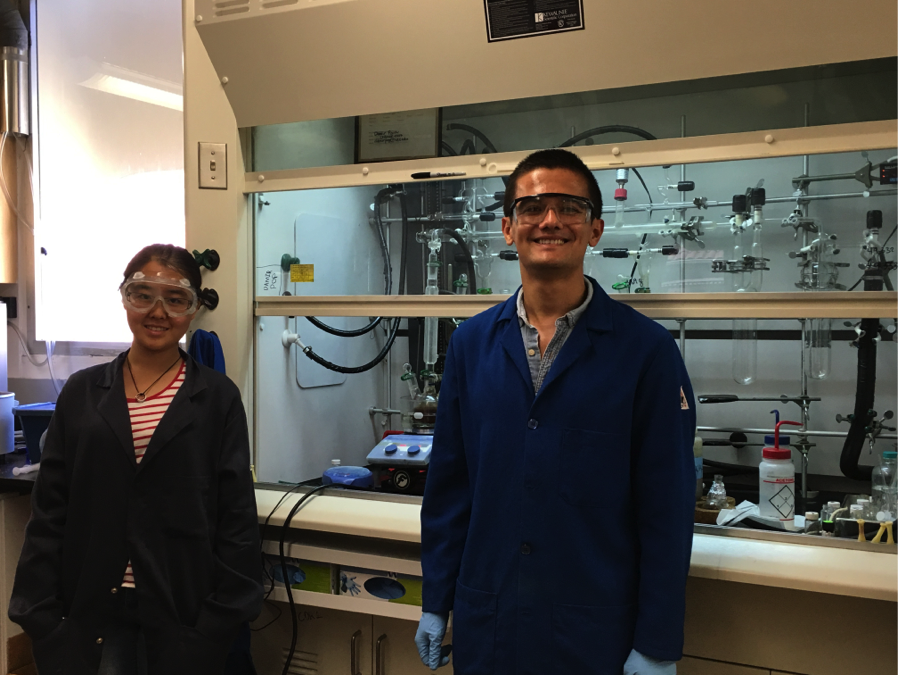By: Damir Popov
I’ve spent this summer researching new sustainable catalysts as a Sonosky Fellow, supported by the USC Wrigley Institute. A chemical reaction that we try to speed up (“catalyze”) in our lab is the reduction of carbon dioxide (CO2). As you might already know, CO2 is a major greenhouse gas that contributes to global warming due to the greenhouse effect. Capturing CO2 from the atmosphere would significantly mitigate this effect, while reducing the captured CO2 into hydrocarbons, methanol and formic acid would provide us with useful fuels and feedstock materials from this cheap and abundant carbon source.

Me and an undergraduate student, Xiaoshan Chai, standing by our fume hood: a working station for chemists
In order to achieve an efficient catalysis for CO2 reduction we use microscopic tools called metal complex catalysts. We make them by reacting metal salts with organic molecules called ligands; the latter are specifically designed to bind the metal salts. The design and construction of these organic molecules require the use of organic chemistry lab techniques and organic synthesis.
Organic synthesis is a time-consuming process and, depending on the rate of the reaction, can take several hours to several days. On the picture below on the left is shown a typical setup for our syntheses, which consists of a reaction flask where the reaction takes place and a hot plate that is needed to heat up the reaction. Heating is needed for the reaction to occur faster, thus saving us time. Also, since our synthetic methods often require the use of air and moisture sensitive materials, we use a Schlenk line (picture below on the right). It consists of a vacuum manifold that allows us to remove air from the reaction flask and an inert gas manifold. The latter carries an inert gas (a gas that is unreactive) such as nitrogen and argon to the reaction flask, making sure no air from the outside can come in contact with any of the reacting materials.
Once the ligand is obtained, it is reacted with a metal salt in order to obtain a metal complex. After isolating the complex we need to see how it looks structure-wise. For this purpose we employ nuclear magnetic resonance (NMR) spectroscopy (picture below on the left) and X-ray single crystal diffraction (picture below on the right). The latter uses X-rays to let us see how atoms are actually arranged in a molecule.
After structural characterization, these metal complexes are ready to be tested as catalysts for the reduction of CO2. But that is a whole another story for another semester!
Damir Popov is a PhD student in the USC Department of Chemistry, working in the research group of Dr. Smaranda Marinescu to develop new catalysts for CO2 recycling.


